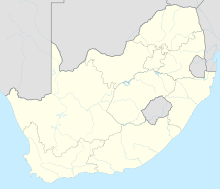Battle of Isandlwana
| Battle of Isandlwana | |||||||
|---|---|---|---|---|---|---|---|
| Part of the Anglo–Zulu War | |||||||
 A historically inaccurate depiction of Lt's Melvill and Coghill fleeing the Battle of Isandlwana with the Queen's Colour, taken from the Illustrated London News. |
|||||||
|
|||||||
| Belligerents | |||||||
|
|
Zulu Kingdom | ||||||
| Commanders and leaders | |||||||
|
Overall commander: Lt. Gen. Lord Chelmsford Subordinate commanders: Bvt. Lt-Col. Henry Pulleine † Bvt. Col. Anthony Durnford † |
Overall commander: Ntshingwayo kaMahole Khoza Subordinate commanders: Vumindaba kaNthati Mavumengwana kaMdlela Zibhebhu kaMapitha |
||||||
| Strength | |||||||
|
No.2 Column: British: 14 Native + colonial: ca. 511 No.3 Column: British: 734 Native + colonial: ca. 578 1,837 men total. In addition to the troops above, an indeterminate number of civilians (wagon drivers, servants, etc.) were also present. |
Zulu Impi: about 20,000 ca. 10,000 to 15,000 engaged Reserve: 4,000 to 5,000 to Rorke's Drift |
||||||
| Casualties and losses | |||||||
| Over 1,300 killed: 52 officers 727 British regulars 471 others including: 133 European Colonial troops 343 African Natal Native Contingent 2 artillery pieces captured |
Approx. 1,000 killed 2,000 wounded |
||||||
|
|
|||||||
The Battle of Isandlwana (alternative spelling: Isandhlwana) on 22 January 1879 was the first major encounter in the Anglo–Zulu War between the British Empire and the Zulu Kingdom. Eleven days after the British commenced their invasion of Zululand in South Africa, a Zulu force of some 20,000 warriors attacked a portion of the British main column consisting of about 1,800 British, colonial and native troops and perhaps 400 civilians. The Zulus were equipped mainly with the traditional assegai iron spears and cow-hide shields, but also had a number of muskets and old rifles though they were not formally trained in their use. The British and colonial troops were armed with the state-of-the-artMartini-Henry breech-loading rifle and two 7-pounder (3-inch, 76 mm) mountain guns deployed as field guns, as well as a rocket battery. Despite a vast disadvantage in weapons technology, the numerically superior Zulus ultimately overwhelmed the poorly led and badly deployed British, killing over 1,300 troops, including all those out on the forward firing line. The Zulu army suffered around a thousand killed.
The battle was a decisive victory for the Zulus and caused the defeat of the first British invasion of Zululand. The British Army had suffered its worst defeat against an indigenous foe with vastly inferior military technology. Isandlwana resulted in the British taking a much more aggressive approach in the Anglo–Zulu War, leading to a heavily reinforced second invasion and the destruction of King Cetshwayo's hopes of a negotiated peace.
Following the imperialist scheme by which Lord Carnarvon had brought about Confederation in Canada through the 1867 British North America Act, it was thought that a similar plan might succeed in South Africa and in 1877 Sir Henry Bartle Frere was appointed as High Commissioner for Southern Africa to instigate the scheme. Some of the obstacles to such a plan were the presence of the independent states of the South African Republic and the Kingdom of Zululand, both of which the British Empire would attempt to overcome by force of arms.
...
Wikipedia

